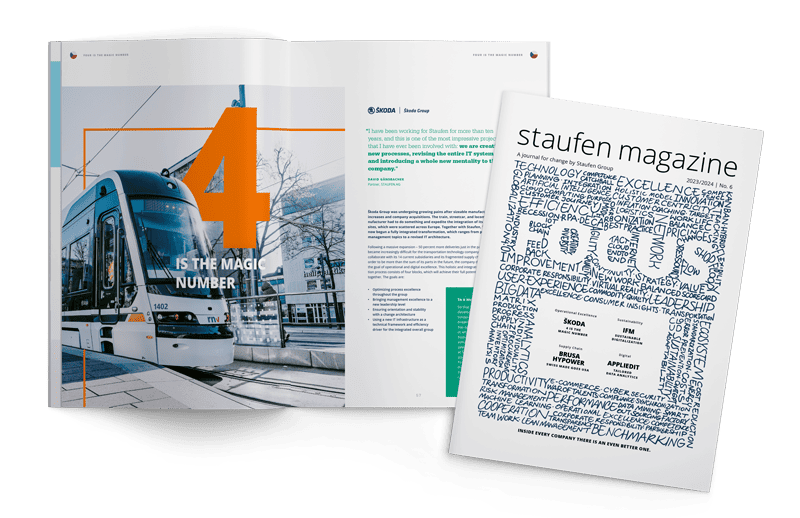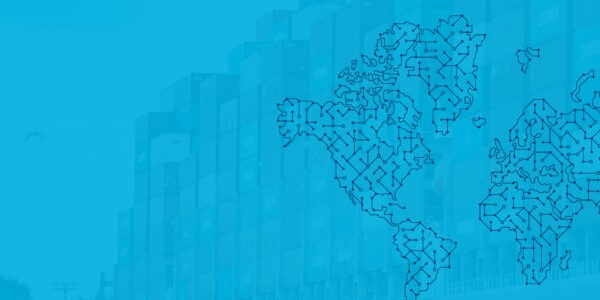
Regionalization of the supply chain
Since the outbreak of the multi-crisis, OEMs and automobile suppliers have begun to regionalize their supply chains. Suddenly, there is a greater focus on countries like Romania, instead of China. The Eastern Europe experts at Staufen AG help companies put their best foot forward. In this interview, Adrian Sandu, the General Secretary of the Romanian Automobile Manufacturers Association (ACAROM), explains why his country is a solid location.
Mr. Sandu, the Covid 19 crisis has demonstrated how fragile global supply chain networks are and thus provided an impetus for greater regionalization. Has Romania benefited from this?
Supply chains have been negatively impacted by COVID and the war between Russia and the Ukraine. For example, components supplied from China were blocked or plastic parts supplied from Ukraine were not delivered on time. As a result, OEMs like the Audi Group, have started to look at alternative sourcing of components from Romania, Serbia and Hungary.
How will supply chains develop in the future? Will the trend toward regionalization continue or will European manufacturers and suppliers look to the Far East once more?
The exodus began during the financial crisis of 2007/2008, because it seemed more efficient at the time to have the components manufactured in the Far East. Now, suppliers are beginning to bring manufacturing back to Europe. This is true for plastic parts, as well as batteries and electronic components, and especially semiconductors. In this context, the European Commission has initiated several financing programs in order to attract investors. Large suppliers like Bosch have already announced that they intend to manufacture semiconductors and other electronic components in Europe. This trend must continue if Europe is to avoid logistics crises like those of the past few years in the future.

Adrian Sandu
General Secretary
ACAROM Romanian Automobile Manufacturers Association

What specific advantages does Romania offer to companies that want to invest and conduct manufacturing there?
Romania still has the lowest labor costs in Europe. More importantly, though, we have a tradition with supplier products. The Romanian automobile sector creates an annual total revenue of 41 billion Euros, more than 70 percent of that is generated by suppliers. They supply the parts for the OEMs in Europe. I always say that no vehicle is manufactured in Europe that doesn’t contain at least one part from Romania. That’s why this tradition is our biggest advantage. We have proven that we can manufacture any part in Romania. In addition, we are efficient and have the necessary political, fiscal, and investment stability.
In which branches, other than the automotive sector, is Romania particularly strong?
IT and electronics are important sectors. But we are also strong in the production of textiles, furniture, and transportation equipment, such as streetcars and locomotives.
What effect is the switch to electric drives in the automotive industry having? How does Romania plan to take advantage of this?
If the industry moves primarily toward electric drives, the suppliers in Romania will adapt to the requirements of the OEMs. Ford has already announced that it will manufacture fully electric vehicles in Romania starting in 2024, Dacia plans to initially produce hybrid vehicles.
What has been done in Romania to attract skilled workers?
All of Europe has a deficit of skilled workers, and each country is trying to find suitable solutions. Romania, for example, has partnerships with universities and schools in order to attract young workers with the necessary skills. In addition, we are searching for talent in Moldavia, Serbia, and Bulgaria, as well as India and Pakistan.
On which regions in Romania has the automobile industry concentrated?
Depending upon their manufacturing, many suppliers are looking for good connections to highways, airports, or train stations to be able to ship quickly. The automobile industry is primarily located in the western and southern parts of Romania. In particular, the West and East have regions with very large numbers of workers. Companies that do not require high-speed deliveries can set up development centers there. For example, Continental. With 21,000 employees, the supplier is the largest employer in this region and has four development centers. In addition to Continental, Bosch, Renault, and Siemens also operate such centers, employing around 15,000 engineers.
Where is there room for improvement in Romania?
Even though progress has been made, we need to accelerate the pace of infrastructure buildup and cut through bureaucratic red tape more quickly. With the knowledge that the industrial landscape will change due to climate change and electro-mobility, suppliers will be faced with new challenges.
The Company
The acronym ACAROM stands for Asociația Constructorilor de Automobile din România, the Romanian Automobile Manufacturers Association. The association was founded in 1996. It represents the national and international interests of its members and promotes development and innovation. In addition, the association offers its members various services, such as market analyses and training measures.
1996
founded
170
members
Request the English Magazine now as a digital or print version

You might also be interested in

Tracking stability instead of a roller coaster ride
During the pandemic, all bicycle manufacturers struggled with supply chain problems, as the demand for e-bikes in particular increased dramatically. Flyer, a Swiss e-bike manufacturer, is now working on making its supply chain network more transparent and resilient.
Read more
Supply Chain Network Management
What will the stable supply chain network of tomorrow look like? An answer to this and other questions can be found in our white paper.
Read more
“Romania has the chance of a lifetime”
Since the opening of the economy, romania has been one of the fastest growing economies in europe. Given the nearshoring discussions in the context of the covid-19 pandemic, the country could even become more important for german industry. Sebastian Metz, managing director of AHK Romania, speaks in an interview about location advantages, challenges and potentials for companies.
Read more

